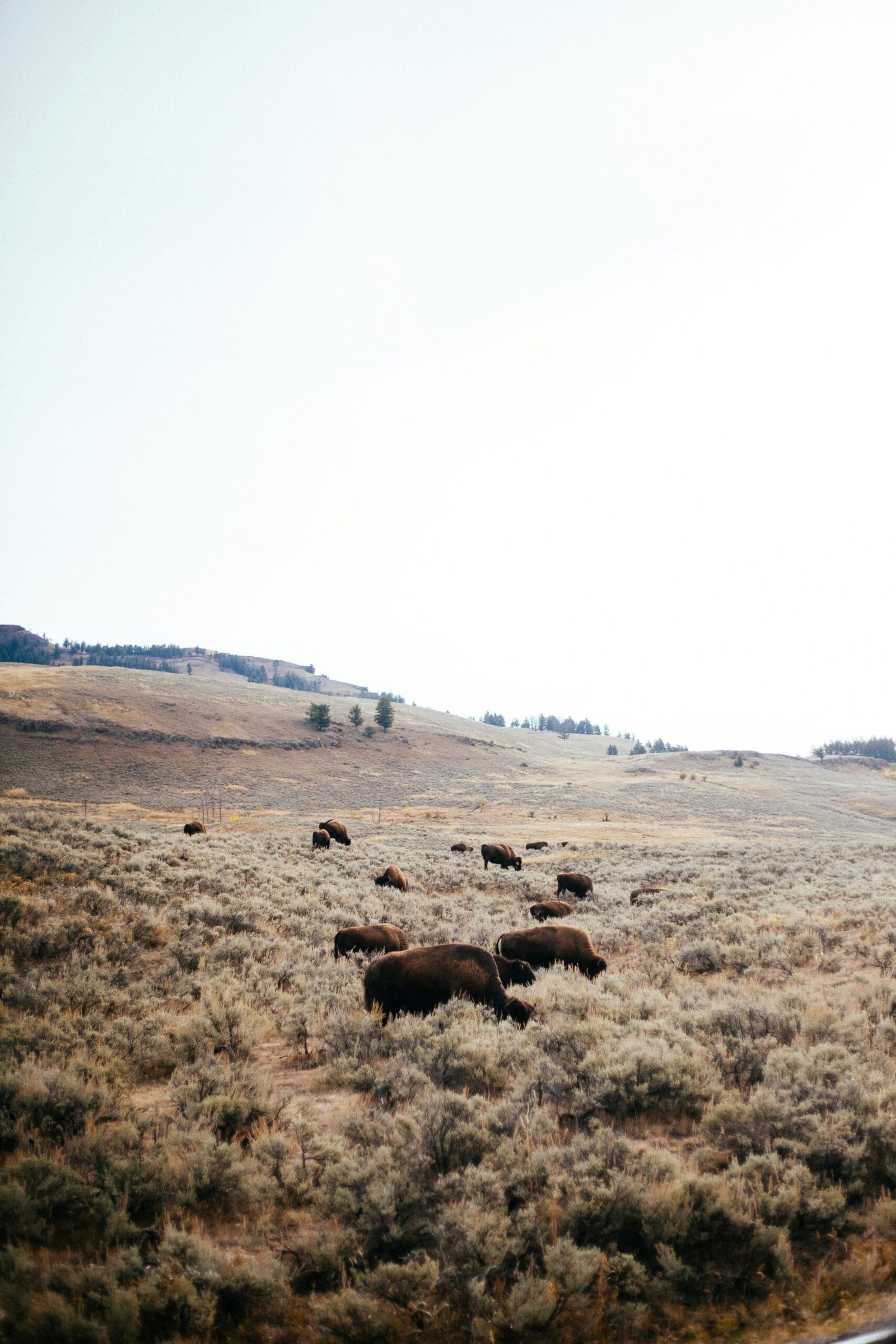Introduction to the American Southwest’s Natural Wonders
The American Southwest is a region renowned for its breathtaking landscapes, vibrant ecosystems, and rich cultural heritage. Stretching across several states, including Arizona, New Mexico, Utah, and portions of Colorado and Nevada, this area is characterized by its diverse topography, which includes arid deserts, towering mesas, deep canyons, and lush forests. Each of these distinct environments plays an essential role in supporting a myriad of plant and animal species that have adapted to the challenging climatic conditions.
In addition to its striking geological formations, the Southwest is home to a rich tapestry of cultural history, shaped by Indigenous peoples and later by European settlers. This historical legacy is evident in the numerous archaeological sites, historic trails, and cultural landmarks that dot the landscape, reflecting the interconnectedness of the natural world and human experience. The harmonious relationship between the land and its inhabitants has fostered a deep respect for the environment, leading to longstanding traditions that prioritize preservation and conservation.
The significance of national parks and monuments in the American Southwest cannot be overstated. These protected areas serve not only as sanctuaries for wildlife and natural ecosystems but also as educational and recreational spaces for visitors. The effective implementation of preservation strategies ensures that future generations will have the opportunity to experience the awe-inspiring beauty of national parks such as the Grand Canyon, Zion, and Arches, among others. By safeguarding these natural wonders, we recognize their intrinsic value and the vital role they play in the ecological health of our planet.
Arches National Park: A Marvel of Nature
Arches National Park, located in southeastern Utah, is renowned for its striking geological formations, most notably the over 2,000 natural stone arches that dot the landscape. This national park spans over 76,000 acres, showcasing unique rock structures that were formed over millions of years through a combination of erosion and weathering processes. Among these iconic formations, Delicate Arch stands out as the park’s most famous feature, drawing visitors from around the globe to witness its breathtaking silhouette against the backdrop of the La Sal Mountains.
The landscape of Arches National Park is not only defined by its arches but also by other remarkable features such as pinnacles, balanced rocks, and fins. The vibrant hues of the sandstone, ranging from deep reds to soft oranges, offer a captivating view, particularly during sunrise and sunset when the light casts enchanting shadows across the terrain. This geological wonder provides a magnificent canvas for photographers and outdoor enthusiasts alike.
In addition to these stunning rock formations, the park is home to a diverse array of wildlife. Visitors may encounter various species of birds, reptiles, and mammals, including mule deer and bighorn sheep. The park’s varied ecosystems, which range from arid desert to riparian environments, support a rich biodiversity that adds to its appeal as a destination for nature lovers.
Exploring Arches National Park is made accessible through several well-maintained hiking trails. Trail options cater to various skill levels, from the short and moderate hike to the Delicate Arch to the more challenging trek through the Devils Garden. Along these trails, informational signs and viewpoints provide insights into the park’s geology and ecology, enhancing the visitor experience.
A visit to Arches National Park promises not only a visual feast for the eyes but also a deeper understanding of Earth’s natural beauty and geological history. With its spectacular scenery and abundant recreational opportunities, it stands as a testament to the magnificence of the American Southwest’s landscapes.
Discovering Zion National Park: Nature’s Cathedral
Zion National Park, located in the southwestern region of the United States, stands as a testament to the awe-inspiring power of nature. Renowned for its breathtaking canyons, towering cliffs, and a rich tapestry of flora and fauna, Zion is a paradise for nature enthusiasts and adventurers alike. The park’s distinctive geological features, including the dramatic Navajo sandstone formations, create a striking landscape that changes with the light, making each visit a unique experience.
One of the most famous landmarks within Zion is Angel’s Landing, a challenging yet rewarding hike that offers stunning panoramic views from its summit. This 5-mile round trip trail gains an elevation of over 1,500 feet, providing hikers with the opportunity to navigate steep climbs and precarious pathways. While the effort is substantial, the breathtaking vista at the top makes the journey worthwhile. Due to its popularity, it’s advisable for hikers to secure a permit in advance, especially during peak seasons.
Another popular trail is The Narrows, which leads hikers through the Virgin River as it winds between towering canyon walls. This hike offers a unique experience as visitors trek through the river, often surrounded by towering cliffs that reach heights of over a thousand feet. Depending on water levels, this hike can vary in its accessibility, thus always checking conditions before embarking is crucial.
For a fulfilling experience in Zion National Park, consider exploring at different times of the day to appreciate the ever-changing light and colors of the landscape. Additionally, taking the shuttle service during busy seasons can greatly enhance convenience and reduce environmental impact. Whether hikers are seeking solitude or the thrill of adventure, Zion National Park promises an unforgettable journey into nature’s cathedral.
Canyonlands National Park: A Diverse Landscape
Canyonlands National Park, located in southeastern Utah, offers a stunning representation of the diverse landscapes that define the American Southwest. The park is characterized by its dramatic canyons, towering mesas, and magnificent buttes, sculpted over millions of years by the erosive forces of water and wind. This unique topography creates a breathtaking backdrop, attracting outdoor enthusiasts and nature lovers alike.
The park is divided into four main districts: Island in the Sky, The Needles, The Maze, and the Colorado River. Each of these areas provides distinct experiences and a variety of recreational activities. Island in the Sky, situated on a high plateau, boasts panoramic views that stretch for miles. Visitors can partake in hiking along accessible trails, such as the famed Mesa Arch trail, which culminates in a stunning sunrise view. The Needles district, featuring a labyrinth of colorful spires and formations, offers more challenging hiking trails suitable for those seeking adventure. Here, the trails weave through narrow canyons and expansive vistas, rewarding hikers with incomparable scenery.
For those who prefer cycling, Canyonlands National Park presents several mountain biking opportunities that cater to different skill levels. The trails range from moderate to rugged, providing access to some of the park’s remote areas. Furthermore, the expansive night skies over Canyonlands have earned the park a reputation as one of the best stargazing locations in the United States. With minimal light pollution, visitors can witness an impressive display of stars, planets, and constellations.
In conclusion, Canyonlands National Park exemplifies the natural beauty and recreational diversity of the American Southwest. Its varied landscapes and outdoor activities make it a must-visit destination for anyone looking to explore this remarkable region.
Capitol Reef National Park: A Hidden Gem
Located in south-central Utah, Capitol Reef National Park is often overshadowed by its more famous counterparts, yet it boasts a remarkable array of geological features and a captivating history. Established as a national park in 1971, Capitol Reef is renowned for the Waterpocket Fold, a nearly 100-mile long warp in the earth’s crust that offers stunning vistas and dramatic landscapes. This geological marvel is not only eye-catching but also serves as a fascinating testament to the geological forces that have shaped the region over millions of years.
The park is characterized by unique rock formations, canyons, and cliffs that exhibit a variety of colors and textures, providing a picturesque backdrop for outdoor enthusiasts and photographers alike. While many visit to hike popular trails such as Hickman Bridge and Cassius’s Overlook, there are numerous lesser-known trails that offer solitude and breathtaking views. The Cohab Canyon Trail, for instance, meanders through scenic landscapes and showcases the diverse flora and fauna of the area, making it perfect for those looking to avoid the crowds.
In addition to its striking geological features, Capitol Reef National Park holds a rich agricultural heritage. The Fruita Historic District, with its well-preserved orchards, reflects the resilience and ingenuity of early Mormon settlers who cultivated the land in the late 19th century. Today, visitors can enjoy seasonal fruit harvesting and participate in guided tours that delve into the park’s agricultural traditions. The combination of the park’s fascinating history and its geological wonders truly makes Capitol Reef a hidden gem in the American Southwest, inviting visitors to explore its mysteries and embrace its tranquil beauty.
Natural Bridges National Monument: A Serene Retreat
Natural Bridges National Monument, located in southeastern Utah, is a hidden gem renowned for its breathtaking natural arches and tranquil ambiance. This park features three magnificent natural bridges—Sipapu, Kachina, and Owachomo—that have been shaped over millennia by the persistent flow of water. Each bridge possesses its own unique character, providing visitors with stunning vistas that are ideal for both exploration and photography. The intricate rock formations, complemented by the surrounding canyon landscape, create an unparalleled sense of serenity, making Natural Bridges an exceptional destination for those seeking respite from the hustle and bustle of daily life.
One of the park’s notable features is its designation as an International Dark Sky Park. The absence of artificial light pollution allows for an exceptional stargazing experience, giving visitors a rare opportunity to view the cosmos in all its glory. The expansive night sky is filled with countless stars, planets, and even the Milky Way, making it a perfect backdrop for photographers and astronomy enthusiasts alike. To fully appreciate this celestial panorama, visitors are encouraged to embark on evening hikes or simply set up a comfortable spot to enjoy the night sky.
For those interested in hiking, Natural Bridges offers several trails that cater to varying skill levels, including the popular loop trail leading to each of the natural bridges. The paths are well-marked and provide a unique perspective of the formations, allowing hikers to observe the intricate details of the rock and the surrounding environment. Photography enthusiasts will find ample opportunities to capture the stunning landscapes and unique geological features throughout the park. The interplay of sunlight and shadow, particularly during the golden hours of sunrise and sunset, creates extraordinary conditions for capturing the beauty of the natural bridges.
Grand Staircase – Escalante National Monument: An Adventure Awaits
The Grand Staircase – Escalante National Monument is a breathtaking expanse of wilderness located in southern Utah. Spanning over 1.8 million acres, this national monument showcases a diverse array of landscapes, including rugged canyons, colorful cliffs, and prehistoric rock formations. It is a haven for outdoor enthusiasts and adventurers alike, offering numerous opportunities for exploration and appreciation of its natural beauty.
One of the most captivating features of the monument is its unique geological formations, which reveal millions of years of ancient history. This area is characterized by the “Grand Staircase,” a series of step-like cliffs that descend from the Colorado Plateau. Each layer of rock provides insight into the Earth’s past, making it a prime location for geological studies and a popular site for paleontologists. Fossils from dinosaurs and other prehistoric creatures can be discovered, making this monument a captivating destination for those interested in Earth’s history.
Hiking is one of the most popular activities in Grand Staircase – Escalante National Monument. Visitors can choose from a variety of trails, each offering stunning views and unique experiences. The Slot canyons, such as Peek-a-boo and Spooky Gulch, are particularly renowned for their narrow passageways and vibrant colors. For a more leisurely exploration, the Calf Creek Falls Trail leads to a beautiful waterfall nestled in a serene setting. No matter the hike chosen, each path reveals the intricacies of this remarkable environment.
When planning a visit, it is essential to be prepared for the remote nature of the area. Ensure ample supplies, including water and food, and consider the timing of your visit to avoid extreme weather conditions. The Grand Staircase – Escalante National Monument offers a spectacular adventure in the heart of the American Southwest, encouraging visitors to immerse themselves in its diverse landscapes and rich history.
Saguaro National Park: The Iconic Cacti
Saguaro National Park, located in southern Arizona, is renowned for its stunning landscape characterized by the towering saguaro cacti, which are synonymous with the American Southwest. This national park, established to preserve the unique ecology of the saguaro cactus, spans over 91,000 acres and is divided into two districts: the Tucson Mountain District and the Rincon Mountain District. These areas feature diverse desert ecosystems that support a variety of wildlife, making it an exceptional destination for nature enthusiasts and outdoor adventurers alike.
The park’s ecosystems vary from dense stands of cacti to rolling hills covered in wildflowers during the spring. Visitors can witness a remarkable range of flora and fauna, including desert bighorn sheep, coyotes, and numerous bird species such as the Gambel’s quail and the roadrunner. The intricate balance of life in this arid environment is a testament to nature’s resilience and adaptability. The park is also home to various smaller desert plants, such as prickly pear and cholla cacti, which contribute to the rich biodiversity of the region.
For those eager to explore, Saguaro National Park offers a variety of scenic drives and hiking trails that cater to different experience levels. The Cactus Forest Drive in the Rincon Mountain District allows visitors to enjoy unparalleled views of the iconic saguaro cacti from the comfort of their vehicles. Additionally, the park features over 165 miles of hiking trails that provide intimate access to the natural beauty and serene surroundings. Whether one chooses a short nature loop or a challenging hike to a mountain summit, the opportunity to experience the unique desert landscape of Saguaro National Park remains unmatched.
Big Bend National Park: A Texas Treasure
Big Bend National Park, located in the remote region of West Texas, offers an unparalleled glimpse into the diversity of ecosystems found in the American Southwest. Spanning over 800,000 acres, the park is a sanctuary for a rich variety of flora and fauna, ranging from desert landscapes to lush riverbanks along the Rio Grande. This unique geography fosters distinct habitats that nurture everything from cacti and desert birds to mesa-top woodland species. As visitors explore the park, they are met with the stunning backdrop of the Chisos Mountains, which present an impressive elevation change, creating microclimates within the park that contribute to its biological diversity.
The Rio Grande, which forms the natural border between the United States and Mexico, is a prominent feature of Big Bend National Park. This iconic river not only serves as a vital water source for local wildlife but also offers unique recreational opportunities for visitors. Canoeing down the Rio Grande provides an intimate experience of the park’s beauty while allowing adventurers to witness the breathtaking scenery from a different perspective. Additionally, the river’s banks offer numerous spots for picnicking or simply relaxing while taking in the vibrant surroundings.
Hiking is perhaps one of the most rewarding activities in Big Bend, with trails suited for all skill levels. From easy walks along the trail of the Window to strenuous hikes that lead to the peaks of the Chisos Mountains, each trail reveals different aspects of the park’s characteristics. Camping under the vast Texas sky is another way to fully immerse oneself in Big Bend’s natural beauty. With limited light pollution, the park offers visitors a chance to witness some of the most spectacular starry nights. To make the most of a trip to Big Bend National Park, visitors are encouraged to plan ahead, prioritize hydration, and respect the natural environment for a more enriching experience.
Lake Mead Recreation Area: An Oasis in the Desert
Lake Mead Recreation Area, straddling the border between Nevada and Arizona, stands as a remarkable testament to the beauty of the American Southwest. Established in 1964, the area serves as both a thriving ecological habitat and a premier outdoor destination, drawing millions of visitors annually. With its vast body of water against a backdrop of rugged desert landscapes, it provides a range of recreational activities that cater to diverse interests, particularly among outdoor enthusiasts.
Boating on Lake Mead is a prominent activity, offering an exhilarating way to explore more than 110 miles of waterway. Visitors can either bring their own boats or rent from local marinas to experience the serenity of the lake’s waters. Fishing is equally popular, with species such as striped bass and catfish abundant, providing opportunities for anglers of all skill levels. The area’s stunning vistas and accessibility not only enhance the boating and fishing experience but also encourage individuals to connect with nature.
Hiking trails abound, ranging from easy walks to challenging treks that wind through the dramatic desert landscape. Trails like the Historic Railroad Trail offer insight into the region’s rich history while presenting stunning views of the Colorado River and the surrounding mountains. Evidence of ancient pueblos and remnants of early settlements can be found along these paths, enriching the hiking experience with a cultural context.
An essential aspect of Lake Mead Recreation Area is its emphasis on water conservation. The region plays a crucial role in preserving the delicate desert ecosystem and ensuring sustainable water management practices are upheld. By educating visitors on the importance of water preservation, the National Park Service aims to foster a sense of responsibility towards the environment, promoting ecological awareness amidst the stunning beauty of the desert oasis.





